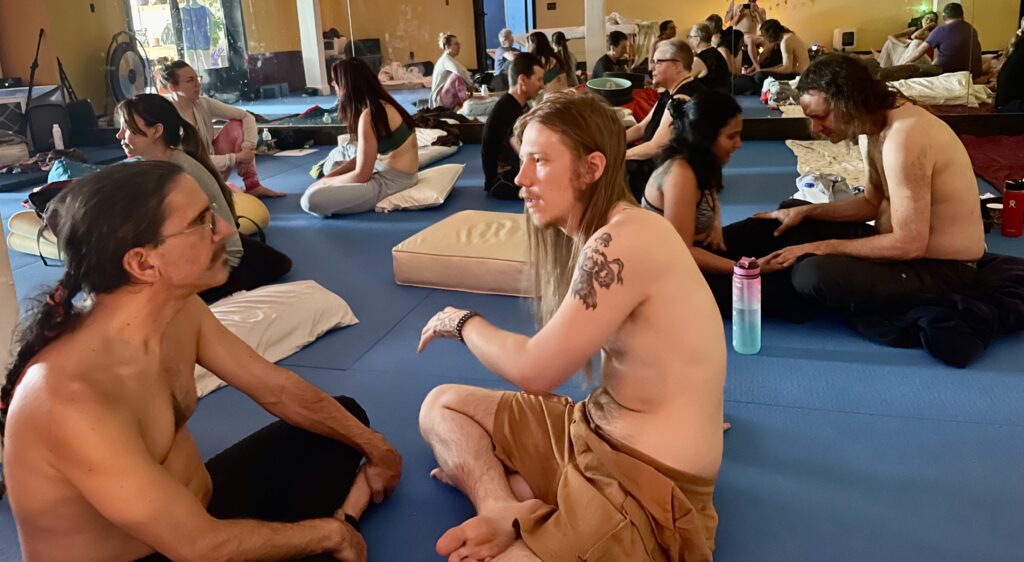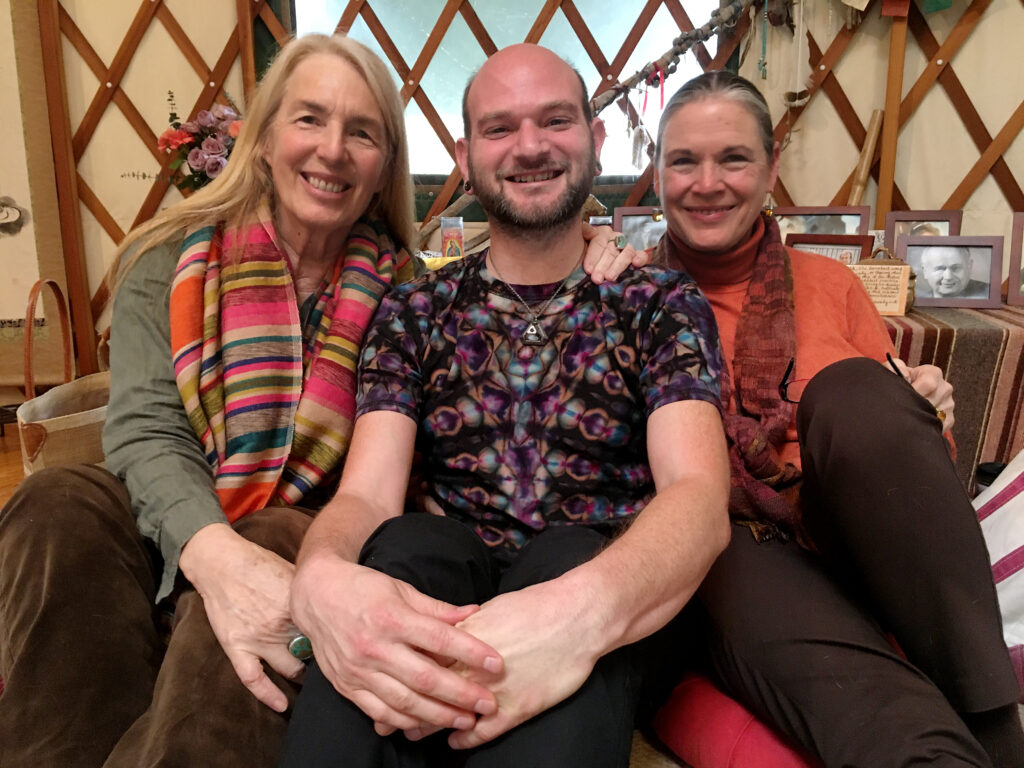Low Dose Gestalt Circle

Amanita stacks really well with a number of modalities including bodywork, acupuncture, sound healing, somatic therapies, hypnosis and, of course, shamanism.
Samas studied Relational Gestalt for 7 years with Dorothy Charles at Esalen, where it was developed. He stands in lineage with Dorothy, Dick Price and Fritz Pearls. His style is both gentle and no-nonsense, but certainly not as harsh as Pearls. The practice is rooted in the understating that the trauma was caused in relationship, so it can only be resolved in relationship. It takes two to know one.
Gestalt is the arc of an experience. Sometimes those arcs get interrupted and the art of relational Gestalt is to complete and resolve those arcs. We use a number of techniques to do that including group games, partner practices in awareness and one-on-one work, referred to as the “open seat”.
We refrain from advice or judgement and seek to support the direct experience of wholeness. For example, we move from the general to the specific (no always or never) and move from talking about someone to talking to someone (using an empty cushion if they are not physically present) then to talking as someone by taking their seat, hearing and responding to our feelings and requests.
In Gestalt work we remain present to what is happening now in the body so that we can tolerate our feelings and respond to life instead of reacting to it. We practice returning to the moment together so that when life offers us difficult opportunities we meet them with courage, poise and equanimity and do not abandon ourselves or allow our past traumas to write our future. We quite simply acknowledge what IS and “give up all hope of a better past”.
When we tune to our emotions in a welcoming environment we have the opportunity to become our own best parent, partner, teacher and friend. We can repattern old emotional pain with new, more appropriate relational experiences.
“Pain does not necessarily create pathology; it is the absence of attuned responsiveness to painful emotion that determines whether or not an experience results in ongoing suffering.” writes Charles.
The dose of Amanita is between 3-6g in tea. It is noticeable and will facilitate our capacity to witness and own our own shadows. We can explore boundary work and the signal value of emotions. It allows us to practice “active dreaming” and forms of internal conflict resolution.
This work prepares us for ceremony by opening up the feeling and thinking layers of our subtle bodies before working in the spiritual realms.

